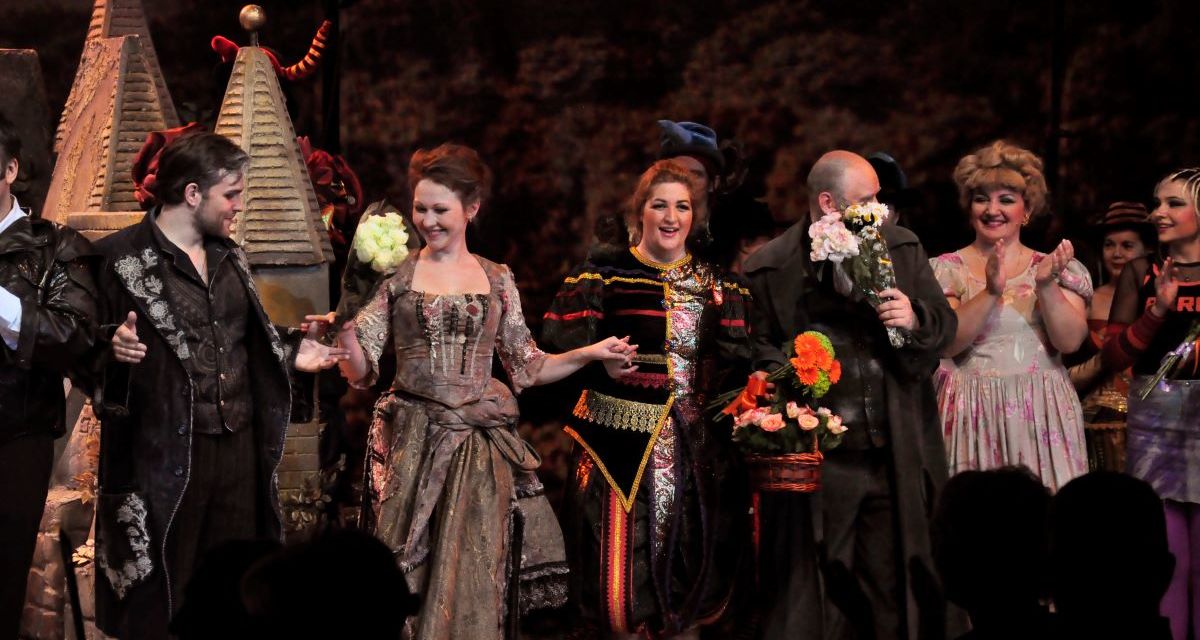Name: Le nozze di Figaro (The Marriage of Figaro)
Composer: Wolfgang Amadeus Mozart
Librettist: Lorenzo Da Ponte
First performed: Burgtheater, Vienna, 1 May 1786
In one sentence: Figaro and Susanna succeed in getting married, foiling the efforts of their philandering employer Count Almaviva to seduce Susanna, teaching him a lesson in fidelity along the way.
Famous characters
The four main characters are the titular Figaro, a valet, his bride-to-be Susanna, a maid, Count Almaviva, their lascivious employer, and his wife Countess Rosina.
This is one of the world’s most performed operas and many famous singers have performed in it over the years. Welsh singing sensation Bryn Terfel played the eponymous hero in a 1992 Met Opera production. Diana Damrau sang the role of Susanna in a 2006 production at The Scala.
Music you might recognise
The Marriage of Figaro is one of Mozart’s greatest hits; it’s packed with well-known songs. The most famous piece of music is the Overture, which can be heard in the film The King’s Speech, while the Countess’s aria ‘Porgi, amor, qualche ristoro’ (‘Grant, love, some comfort’), lamenting her husband’s infidelity, is another highlight. You’ll probably also recognise Cherubino’s Aria ‘Voi che sapete che cosa è amor’ (You ladies who know what love is’), among others.
Greek soprano Maria Callas sings ‘Porgi, amor, qualche ristoro’
Synopsis
The Marriage of Figaro is set during a single day – the ‘day of folly’ of the opera’s subtitle – servants Figaro and Susanna are looking forward to their wedding. However, Count Almaviva, their employer, has designs on Susanna himself and intends to reinstate the old tradition of droit de seigneur – the alleged right of a lord to have sex with a vassal’s bride on her wedding night – so that he might bed her.
The Countess Rosina, however, is heartbroken at the prospect of her husband’s infidelity. She also finds herself the object of pageboy Cherubino’s adolescent infatuation. In a jealous fury, the Count determines to send the boy – usually sung by a woman in what’s known as a trouser role – to join the military.
Meanwhile, Dr Bartolo’s former housekeeper Marcellina claims that Figaro owes her a debt and if he can’t pay it he must marry her. The not-so-good doctor wants revenge on Figaro for foiling his own plans to marry Rosina and spoiling Figaro’s wedding day would fit the bill nicely.
If many of the names here sound familiar, that could be because you encountered these characters in Rossini’s The Barber of Seville (1816), in which Figaro helped Count Almaviva secure the hand of Rosina at the expense of her guardian Dr Bartolo. Both operas were based on plays by French playwright Pierre Beaumarchais, written as part of a trilogy centred on Figaro (the third is the much lesser known The Guilty Mother).
Back to this story. Figaro hatches a plan to outwit Almaviva and teach him a lesson. He joins forces with Susanna, Cherubino and the Countess to trick the Count into believing he is having a tryst with Susanna – really Cherubino in disguise – only to be discovered by his wife. At the same time, an anonymous letter (written by Figaro) will be delivered to the Count, claiming that the Countess is having her own affair.
What follows is a farce of disguises, mistaken identities, secrets revealed and overheard, and concealed characters hearing things they shouldn’t. Figaro himself reveals information that means he can’t possibly marry Marcellina.
In the end, though, all comes good. The Count is humiliated and suitably contrite. The Countess forgives him. Cherubino finds his own lover. Marcellina is pacified. And, most importantly, Figaro and Susanna get married.
Image
The Marriage of Figaro at the Helikon Opera in 2014, with Alexey Isaev as Count Almaviva, Elena Semyonova as the Countess and Inna Zvenyatskaya as Cherubino (Gerarus via Wikimedia Commons).

